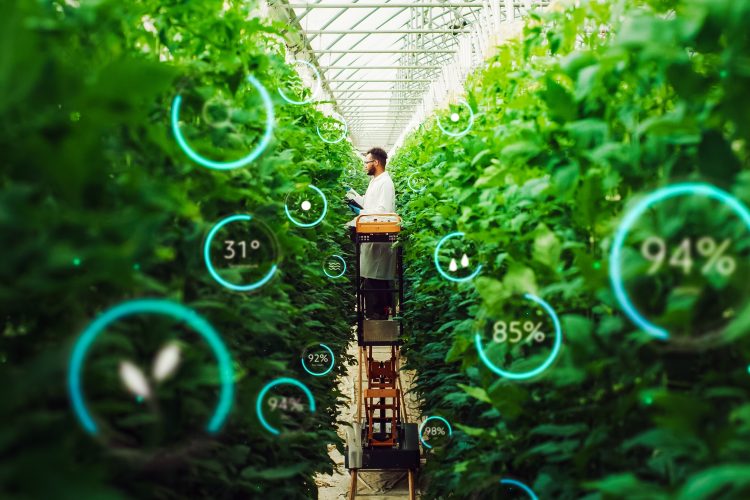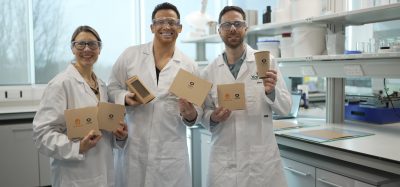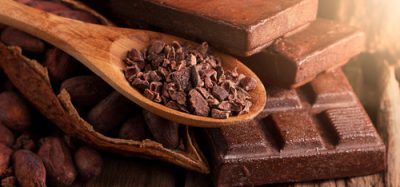Expert predicts AI fuelled “fourth agricultural revolution”
Posted: 9 January 2024 | Grace Galler | No comments yet
According to a US-based researcher, AI could transform agriculture and help to meet the need for safe, sustainably-produced food for a growing global population.


Azahar Ali, a biosensing Engineer and Assistant Professor of animal sciences and biological systems engineering at Virginia Tech, has shared that he is “bracing for the arrival of a fourth agricultural revolution”
In order to meet the need for safe, sustainably-produced food for a growing global population, Ali pointed to smart, connective technologies, something he believes is “yet to be fully explored”.
Three technologies signposted by Ali that may “stand out” for their potential to advance climate-smart, precision agriculture include wearable agriculture sensors, “smart” devices, and artificial intelligence (AI).
The review article was published by Advanced Intelligent Systems, and was researched by Ali and colleagues including Matin Ataei Kachouei of the School of Animal Sciences and Ajeet Kaushik of Florida Polytechnic University. The authors shared that, through merging these cutting-edge technologies, a “paradigm shift” could be created in how the agricultural sector monitors food safety and quality and plant health and productivity worldwide.
Ali stated that prioritising rapid, accurate, early monitoring will be “critical” to sustainably and safely feeding the fast-growing global population, which is expected to be nearly 10 billion by 2050 and will require 50 percent more food to maintain the world’s food supply chain, according to the article.
Going further, Ali said researchers will need to collaborate to tap into the “full potential” of new technologies that could help producers keep up with future demand. Agronomists need to work with experts in engineering, human and veterinary medicine, and materials science.
“There’s a huge gap in this kind of collaboration. I develop sensors, but I need to collaborate with experts in machine learning. We need to engage in more collaboration to solve the food crisis,” said Ali.
In the article, Ali, Kachouei, and Kaushik highlighted recent progress made by researchers in applying sensors, smart devices, and AI in monitoring food and plants. They also described the potential and challenges of combining the technologies.
In fact, they highlighted that food sensor technology has seen “remarkable development with a focus on measuring toxins, humidity, pH, freshness, temperature, contaminants, and pathogens. Keeping tabs on these factors is key to food safety, food quality, and high packaging standards, according to the researchers.
What’s more the team described how these sensing capabilities could be enhanced when paired with other technologies. “With the pairing of sensors and smart devices, food, livestock, and plant sensing systems could precisely collect data in real time, on site, and at a large scale. Next-generation networks could then quickly transmit the high-volume data generated by those systems,” they shared.
What’s more, the researchers claimed that AI could streamline data analysis through automatic data processing and, according to Ali, could take on the volumes of data generated by smart sensors.
“Combined, smart devices and AI also offer the potential for predictive analysis, enabling producers to proactively anticipate challenges such as disease outbreaks and weather patterns.”
Currently, researchers are exploring integration of multiple technologies, including the development of electrochemical sensors used to detect disease biomarkers in cow milk, orange juice, and apple juice, as well as the use of microneedle-based integrated plant sensors alongside smartphone-based 3D-printed devices to detect viruses in tomatoes.
However, Ali and his colleagues noted existing challenges for tapping into the technologies of the fourth agricultural revolution including security concerns in data collection using smart sensors; the costs of sensors, network infrastructure, and data management.
As a way to address these challenges, Ali noted the need for collaboration between scientists, policymakers and farmers. “To solve our common problems, we need to work together,” Ali concluded.
Related topics
Environment, Food Security, Research & development, Trade & Economy, World Food
Related organisations
Advanced Intelligent Systems, Florida Polytechnic University









